#archeology sites
Explore tagged Tumblr posts
Text
What the heck? This is a world historical site! Why would people not protect it ? I understand Palestinians want to destroy Israel and any link of Jews to the land of ancient Israel but this is ridiculous! Israel has an obligation to protect archeological sites but so do the Palestinians!
#archeology#history#ancient history#archeology sites#archeology destruction#Israel#Palestine#Palestinian crime
0 notes
Text









#studyblr#notes#history#historyblr#world heritage sites#archaeology#archaeological sites#archaeology sites#archeology#archeology sites#archeological sites#archeology notes#archaeology notes#anthropology#anthropology notes#birka#birka archaeological site#birka site#powerpoints#powerpoint#presentation#presentations#world history#viking history#vikings#viking
1 note
·
View note
Text
Actually people with this condition didn’t ‘just die’ in the past! They probably suffered immensely and lingered on for a while, maybe even long enough to reproduce. Then they died.
#it’s crazy how much the human body can put up with#osteopathology from archeological sites is so wild#your bones were like Swiss cheese and you survived like that for a long time
672 notes
·
View notes
Text








Chichén Itzá // Yucatán, México
Tumblr | Instagram | Society6
#chichen itza#yucatan#mexico#seven wonders#latin america#UNESCO#archeological site#El Castillo#Temple of Kukulcan#travel#wanderlust#Mesoamerica#canon photos#original photography#photographers on tumblr#Mayan ruins#iguana
178 notes
·
View notes
Text
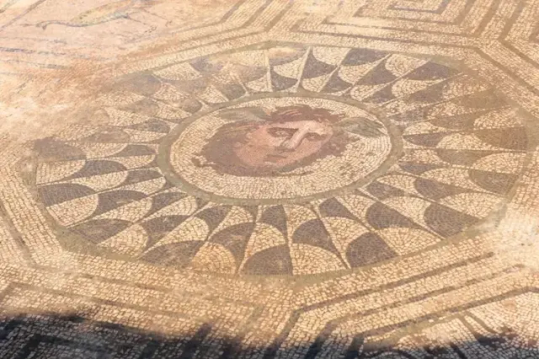
Archaeologists Unearth Ancient Mosaic of Winged Medusa in Spain
The stunningly preserved Ancient Roman mosaic floor was found at the Huerta de Otero site in the city of Mérida.
In both ancient and modern interpretations, Medusa is often known as a monster — a Gorgon with tresses of serpents whose stare turned men to stone. This version typically appears in children’s movies and fantasy thrillers, but her image hasn’t always been so awe-inspiring. In late June, archaeologists in Western Spain uncovered an Ancient Roman mosaic floor that depicts Medusa with tiny wings and flowing locks of hair, thought to have been used as a protective symbol.

The mosaic was found in the city of Mérida’s Huerta de Otero archaeological site. Ancient Romans established a colony there in 25 BCE named Augusta Emerita. Traces of its former inhabitants — including an amphitheater and a bridge — can be found throughout the modern-day city. “[The site] is of an exceptional nature due to the level of conservation of the ruins and, above all, the ornamental elements that decorate the well-preserved house: not only the mosaic of the Medusa but also paintings and sculptural motifs,” said archaeologist Félix Palma in a statement.
The Huerta de Otero location was excavated in 1976 but lay untouched for decades. Research picked back up in 2019, when the city employed professional archaeologists and students from its Barraeca II Professional School to explore the ruins. Since then, the team has uncovered an Ancient Roman defensive wall, a road, and the home of a wealthy family.
The Medusa mosaic adorned the floor of this home. Depictions of fish, peacocks, and carefully tessellated patterns surround the artwork’s central figure: a human-like Medusa, her gaze turned to one side.


Although this image diverges from some contemporary renditions of the mythological figure, the mosaic’s winged version was common in Ancient portrayals of Medusa. While early Greek depictions of the mortal-turned-monster, cruelly punished for being raped by the god Poseidon, show her as grotesque, Medusa’s image softened by the time of the Ancient Romans. Beginning in the Classical Greek period, her face acquired more human attributes. It started to be rendered with symmetry and youthful beauty in the following centuries.
Other Ancient Roman mosaics featuring the head of Medusa have been discovered throughout Spain. Medusa again comprises the focal point of an Ancient Roman mosaic in a 115–150 CE work found in Rome, where she can be seen sporting human curls and a snake around her neck. A 1st-to-2nd-century ornament from a chariot pole shows a young woman with curly locks (although a couple of snakes still peer through her tangle of hair).
In Ancient Greek mythology, Perseus killed Medusa to avoid being turned to stone. Medusa, in her early terrifying form, was used as a protective symbol — “an image of evil to repel evil,” Madeleine Glennon writes in a 2017 essay for the Metropolitan Museum of Art. The goddess Athena famously included a representation of Medusa’s severed head on her protective cloak or aegis. In Ancient Rome, her beautified image was still employed as a protective symbol, although the depiction shifted into a form more similar to a woman than a monster.
By Elaine Velie.
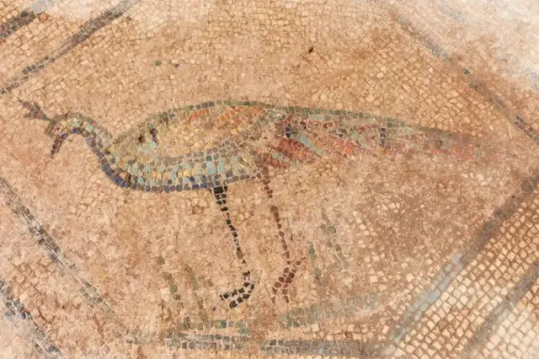
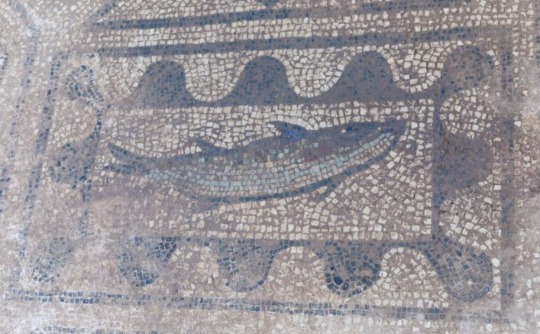
#Archaeologists Unearth Ancient Mosaic of Winged Medusa in Spain#mosaic#roman mosaic#Mérida Spain#Huerta de Otero archaeological site#ancient artifacts#archeology#archeolgst#history#history news#ancient history#ancient culture#ancient civilizations#roman history#roman empire#roman art
608 notes
·
View notes
Text

The wine cellar, House of Neptune and Amphitrite in Herculaneum
Photo courtesy of Laura Noviello / Anima Vesuviana- IG
58 notes
·
View notes
Photo
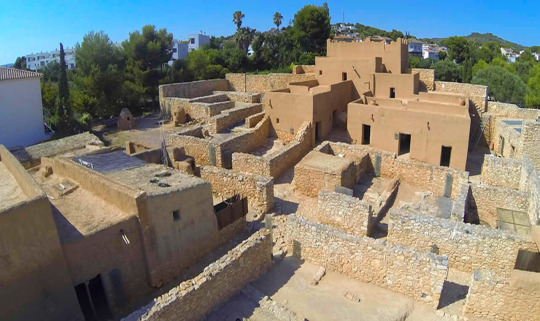

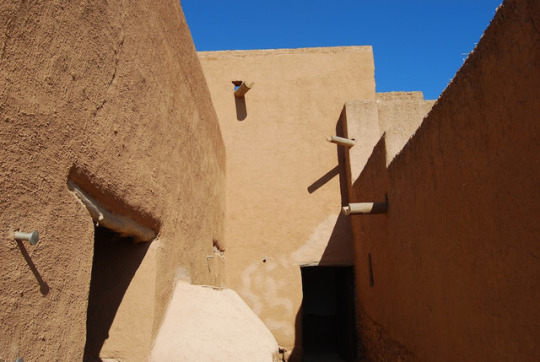
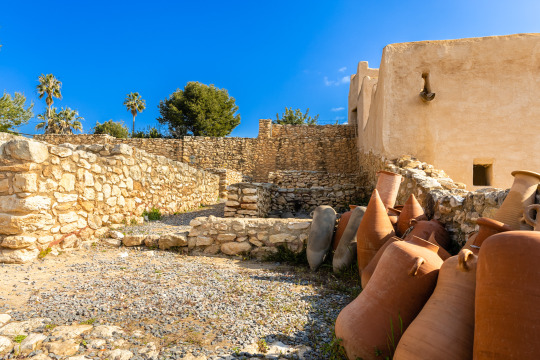
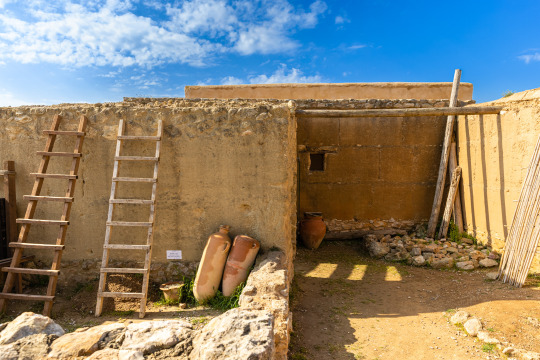
The archaeological site Iberian Citadel of Calafell (Penedès, Catalonia) was a fortified residence built by the Cessetani people (one of the Ancient Iberian peoples) and inhabited between the 6th and 2nd centuries BC. Its destruction was probably due to the Roman occupation.
A part of the archaeological site has been rebuilt in the original techniques to serve two purposes: one, it allowed archaeologists to research the building methods through experimental archaeology; and two, to show what an Ancient Iberian village from around the year 200 BC would look like. You can see the result in these photos: the foundations and lower part of the walls are made of stone to keep out the humidities from the ground, and the rest of wall is made of rammed earth, with ceilings using wooden beams and reed fences. The research focused on those elements that rarely leave a trace, for example the inclination of the roofs (when the walls and roofs are made of a material that doesn't resist the passage of time, like rammed earth) and water draining.
Photos from Enoturisme Penedès and Visit Calafell. You can find the results of the reseach in the article linked here.
#arqueologia#història#calafell#catalunya#ancient iberians#archeology#archaeology#antiquity#iberian#culture#history#historical#travel#europe#southern europe#protohistory#iron age#experimental archaeology#archaeological site#ancient iberian#ancient
73 notes
·
View notes
Text
Heraion of Perachora — sanctuary of Hera Akraia

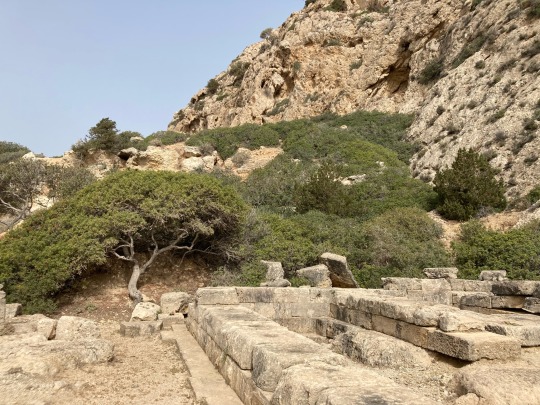
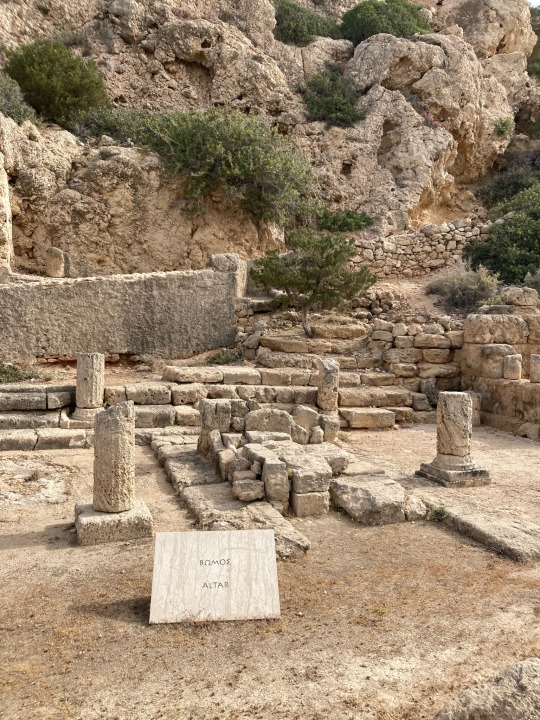
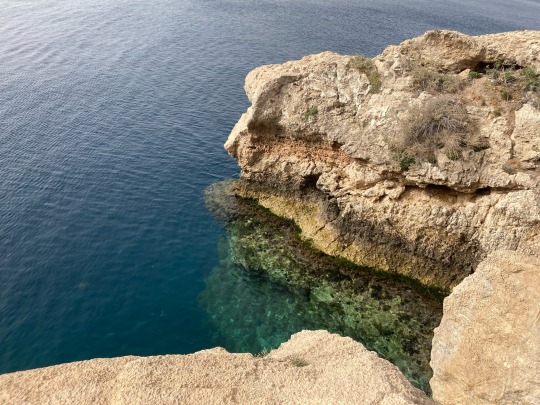
#i could only spend 30 minutes there but it’s beautiful#greece : may 2024#—#corinthia#hera#temple#ancient temples#hera*#hera deity#archeological site#helpol#classics#hera akraia#hera acraia#greece#ancient greece#ancient greek religion#wine dark sea
95 notes
·
View notes
Text
I don’t get people who still see Neanderthals as these stupid, barely human oafs. The Moment I heard what Shanidar cave was I knew they were like us.
Burring the dead? Sure, everyone does that. But the flower necklace, that takes time. That takes care. That shows a capacity to think about concept like the afterlife. Their friend died and they did not continue on like mindless animals, they exercised their capacity for love and set them to rest the way they knew how.
If you cannot see them as more alike us after that, that may reflect more on you than the Neanderthals themselves.
#anthropology#neanderthal#shanidar cave#human core#archeology#paleoanthropology#burial#burial site#peoplehood
191 notes
·
View notes
Note
It’s from ..haha a YEAR ago but saw the “OC Outfit Doodle Asks” Soooo🎭 OC in another OC’s typical attire.Raf and Margie in Lomair and ..Anie ?I think I saw her called Amber somewhere too. I really wanted to ask this already but saw the post so yeh just gonna ask! It’s fine if you don’t want to draw, could you write how they’d react to suddenly being in the attire of an ~1880s gentleman and maid (or the Druid cloths). Side note I love the later Victorian era (fashion and now antique things)!

#whewww you've been going back into archeological dig sites tho if you've seen posts where Aine was being called Amber#those are over a decade old! haha amazing.
57 notes
·
View notes
Text

#baalbek#lebanon#palestine#israel is a terrorist occupation#genocide#ethnic cleansing#fuck israel#free palestine#from the river to the sea palestine will be free#israel#british politics#us politics#unesco#heritage site#art history#archeology#gaza#zionism
25 notes
·
View notes
Text

Not that far from Gobekli Tepe in Turkey is Karahan Tepe (believed to be older by a few centuries) with this room containing 11 penises and a head, all carved out of bedrock.
22 notes
·
View notes
Text
you know how fascinated I am by process so here's some thoughts ranked in order of least to greatest importance as I'm working on this fic: 4. do I need to warn for character death well um 3. will they even fix anything plot-wise or is it just kind of a wash 2. uhh what are even the actual timeline events of the clone wars I need to keep in mind relevant to where I set this 1. ✨WHAT IS TEEN SIFO-DYAS LISTENING TO ON HIS SPACE WALKMAN IN THE FIRST SCENE AND HOW CAN I MAKE IT A SUBTLE BLINK AND MISS IT REFERENCE TO A MUSIC VIDEO WARREN FU HAS PRODUCED✨
#lil Megan Thee Stallion pumping in the cursed archeological site#Lene's gonna take that thing away#time travel au#hey at least I'm writing SOMETHING
15 notes
·
View notes
Text


A mosaic with “… the Menorah in the middle, the Shofar on the left and Lulav on the right. Underneath is an inscription in Hebrew letters: ‘Shalom al Israel’ Peace upon Israel). The Hebrew letter י of Israel is like an arrow showing the exact place there on the mosaic.”
Synagogue dates to 6-7th century
40 notes
·
View notes
Text

Monte Albán archeological site in Mexico
Mexican vintage postcard
#monte#sepia#site#albn#photography#vintage#mexico#postkaart#archeological#monte albán#ansichtskarte#ephemera#carte postale#postcard#postal#mexican#briefkaart#photo#tarjeta#historic#postkarte
24 notes
·
View notes
Text
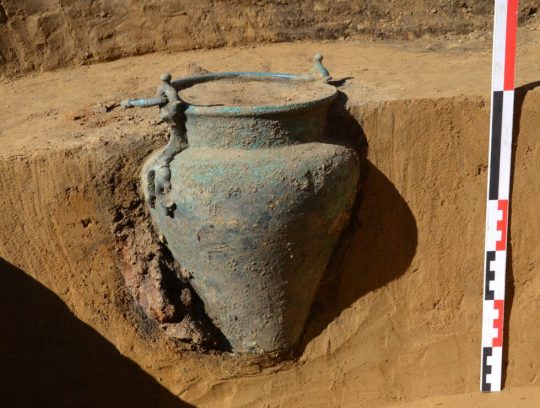
Rare Roman vessel Found at 2,000-Year-Old Burial Site in Poland
Archaeologists investigating a 2,000-year-old burial site in Poland have discovered cremated remains inside a Roman vessel, one of very few of its type ever found in the country.
The discovery was made during research in the town of Kazimierza Wielka, southern Poland, led by archaeologists from the Jagiellonian University in Kraków. In total, 160 objects were found, with some dating back as far as the Neolithic period, reports the Polish Press Agency (PAP).
A particularly interesting find was a burial site dating to the pre-Roman and early Roman period, which contained four cremation graves and 23 skeletons.
One set of cremated remains had been placed inside a vessel (pictured above), made from copper alloys, imported from the Roman empire and decorated with dolphin shapes.
“Such vessels are exceptionally rare in Poland,” said Kamil Sikora, a spokesman for the Jagiellonian University.
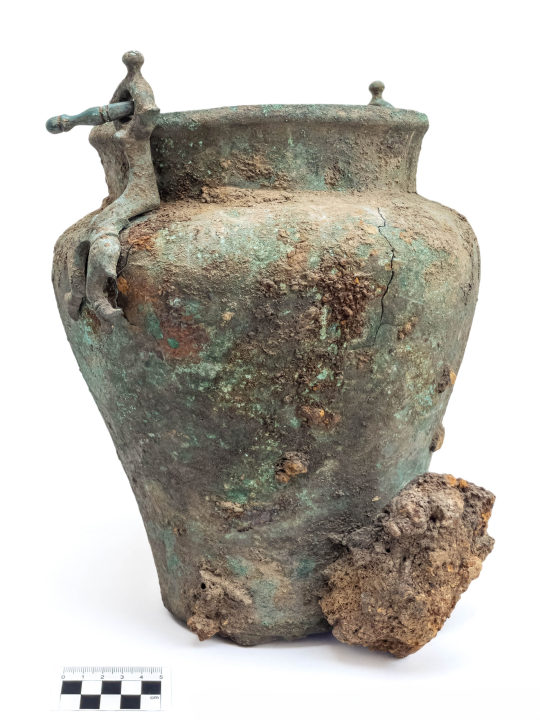
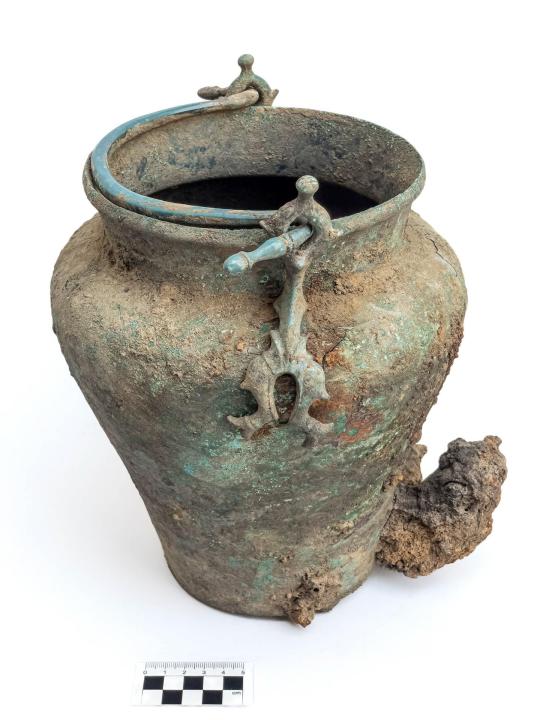
In areas occupied by the so-called Przeworsk culture, which lived in what is now central and southern Poland between the 3rd century BC and the 5th century AD, only seven such vessels have been discovered and only four were used as urns.
Alongside the urn, the archaeologists discovered weapons typical of warriors from the Przeworsk culture, including a sword and two spearheads, as well as a shield boss. The items had been ritually bent and damaged, which is consistent with the funeral practices of the time.
The researchers also note that the discovery of skeletal remains is unusual for the Przeworsk culture, which normally cremated its dead. Most of those found at this site are the remains of women, who were buried with ornaments and items of clothing.
By Daniel Tilles.




#Rare Roman vessel Found at 2000-Year-Old Burial Site in Poland#Kazimierza Wielka#ancient grave#ancient tomb#ancient urn#ancient artifacts#archeology#archeolgst#history#history news#ancient history#ancient culture#ancient civilizations#Przeworsk culture#roman history#roman empire#roman art#ancient art#art history
101 notes
·
View notes